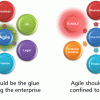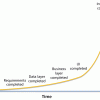Strategic advice to leverage new technologies
Technology is at the heart of nearly every enterprise, enabling new business models and strategies, and serving as the catalyst to industry convergence. Leveraging the right technology can improve business outcomes, providing intelligence and insights that help you make more informed and accurate decisions. From finding patterns in data through data science, to curating relevant insights with data analytics, to the predictive abilities and innumerable applications of AI, to solving challenging business problems with ML, NLP, and knowledge graphs, technology has brought decision-making to a more intelligent level. Keep pace with the technology trends, opportunities, applications, and real-world use cases that will move your organization closer to its transformation and business goals.
Recently Published
I strongly believe that adopting a particular methodology is not the answer. Rather, organizations need to fix their internal structure and the way they operate. In this article, I will discuss the challenges hindering agility and also the bottlenecks that prevent organizations from delivering business value. I focus on six phenomena that make any organization rigid, illustrating them with real-life case studies.
This Executive Update completes a review of mobile offerings by the major enterprise applications players and makes some general observations about the barriers to adoption.
I suggest when teams start off, they go with shorter iterations, and once they feel they've got the Agile process down, and they're working together well, and they've got a good mindset shift, then they can expand to two or three weeks. Anything bigger than that and you're shortchanging yourself on your learning cycles.
There can be no illusions that the transition to Agile won't impact the organization. There will be effects on the organizational structure, hiring practices, funding/budgeting approaches, HR reviews, and more, if the transition is to be successful. Fortunately, our authors in this issue have encountered both the problems I've listed and the solutions to them. They provide practical advice from real-world situations to manage the difficulties you will encounter.
We use the term "cargo cults" to describe teams whose activities look and feel Agile to the casual observer, and have some of the trappings (e.g., daily stand-ups, periodic planning), but are not supported by a corresponding adherence to Agile principles. Often these teams are simply carrying on as they always did but using the camouflage of Agile terminology to mask the lack of change.
In the previous two Agile Advisors in this series (see "One Size Does Not Fit All, Part I" and "One Size Does Not Fit All, Part II"), we described characterization of projects using three criteria:
-
Innovation -- determines the kind of performance measures to be used: descriptive, predictive or combination of the two.
Complexity exists everywhere. Would it not be helpful to understand specific kinds of complex situations where the services of architects are particularly valuable? This would help enterprises use architects' capabilities more effectively.
















